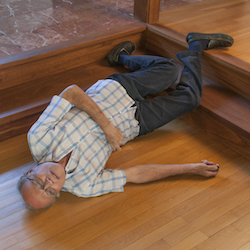
Nonfatal falls in assisted living and other residential facilities and home health settings are responsible for the highest dollar amount of healthcare spending for such falls compared with other settings, according to a new analysis published today by the Journal of the American Geriatrics Society.
Researchers from the Centers for Disease Control and Prevention and the University of Colorado used a new method to calculate fall-related spending for the U.S. population aged 65 or more years in 2015.
They found that nonfatal fall-related healthcare spending at residential communities, personal care homes, continuing care retirement communities and skilled nursing facilities, as well as such expenses related to home healthcare, durable medical equipment and other nondurable medical products, totaled $29.2 billion, or 11.8% of all spending in such settings.
Those figures compare with $12.9 billion at hospitals (accounting for 4.4% of hospital expenditures), $10.8 billion related to physicians and other providers (5.7%), $2.1 billion related to prescription drugs (2%), and $0.4 billion for dentists (1.6%).
Overall, of those who fell in any setting, more than half (52.1%) fell once, 21.3% fell twice and 24.1% fell three or more times. “Those who fell were significantly more likely to be female, Caucasian, older, and lower income,” the authors wrote.
The researchers found that Medicare paid approximately $28.9 billion for nonfatal falls in adults aged 65 and older in 2015, whereas Medicaid paid $8.7 billion and private insurance and other payers paid $12 billion.
Total medical spending for fatal falls was $754 million, they estimated.
“Preventive strategies that reduce falls in older adults could lead to a substantial reduction in healthcare spending,” the authors wrote. Possible solutions, they added, include medication management, strength and balance exercises and, on a broader level, implementation of the CDC’s Stopping Elderly Accidents, Deaths and Injuries (STEADI) fall risk assessment initiative.



